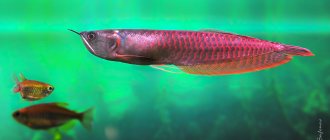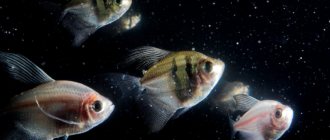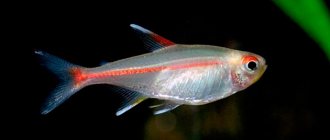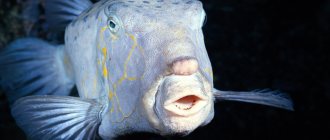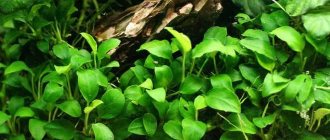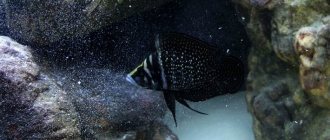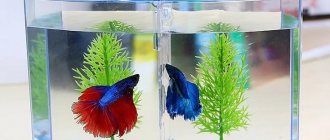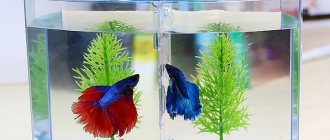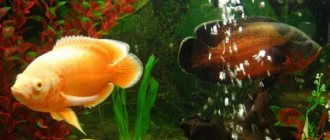Interesting representatives of the carp-toothed family are Killifish. Because of their elongated body shape, they are also called pikes. Species bred in aquariums reach an average size of ten centimeters. In their natural environment, they live in small, often dry, streams and lakes, therefore they are adapted to harsh environmental conditions. They are conventionally divided into seasonal and non-seasonal killifish species. Variegated KilliFish do not have one color in color, most often it is a combination of several colors. Mostly, the dominant colors are: gold, orange, red, purple, yellow, blue, bright green. The most popular list of killifish species includes the following:
- Afiosemions
- Nothobranchius
- lineatuses
Species compatibility
A favorable neighborhood of aquarium pikes is possible with different fish. They coexist well with their own kind. Killi Fish are generally friendly, so it is recommended to keep them with calm or moderately calm relatives of approximately the same size and behavioral forms.
During the spawning period, the level of aggressiveness increases. Initially, pike raised in a common aquarium get used to their neighbors and no conflicts arise. Updating the community brings disturbance to a measured life, so it is advisable to decide on its permanent composition.
Nutrition and types of feed
They prefer to eat food floating on the surface. They feed on live food. Chopped tubifex, coretra, cyclops, and chopped bloodworms are suitable. It is unlikely to be adapted to dry food. It is possible to switch to frozen food, however, these periods should not be a significant period of time. Additionally, overfeeding is harmful to the KilliFish, so uneaten food should be removed from the tank after five to ten minutes. It is preferable to feed twice a day: in the morning and in the evening. A varied diet will ensure the health of your mini aqua world's population.
Keeping killifish at home
Despite the excellent ability to adapt to harsh environmental conditions, pike aquarium fish consider keeping them comfortable when the temperature is 22°C - 24°C. They can tolerate a drop to 20°C quite well, but an increase to 25°C has a bad effect on them - they become inactive and stop spawning. Increasing temperatures have a depressing effect on killifish and, according to experienced aquarists, shortens life expectancy.
Filtration and aeration are not necessary. You only need to replace a quarter of the water every one and a half to two weeks, the acidity of which should be 6pH - 7.5pH, and the hardness 2gH - 10gH. The aquarium must be covered with glass, given the ability of these creatures to jump out. For a normal existence, it is advisable for them to equip a mini-underwater world with an abundance of shelters.
Meet the killifish
General information about killifish
Killie fish are a fairly large group of fish, including American and African species. For the most part, these are medium-sized (6–12 cm) fish with a recognizable profile. Because of their appearance, they received a second name – “pike”. Although, naturally, killifish have nothing to do with real pikes.
In total, there are more than 100 species of spawning fish. But difficulties with breeding have led to the fact that only a few dozen varieties can be found in aquariums. On the other hand, the variety of such fish is quite enough to find a species that is ideal for your aquarium.
In their natural environment, killifish live in open water bodies, and in a variety of conditions: some species easily tolerate high acidity of water, some can withstand temperatures up to 50 degrees, etc. There are also fish that prefer to live at the mouths of rivers that flow into the sea - they swim into salt water without consequences.
But still, the main habitat for killifish is small lakes, canals or even puddles. This, by the way, is where their name comes from (“kill” translated from Dutch as “ditch” or “small body of water”). This explains both the outstanding ability to adapt to the most extreme conditions of existence and the peculiarities of the breeding cycles of many killifish.
The most popular types of killifish
In any pet store or poultry market, the assortment of spawning carp-toothed fish is quite extensive. But if you do not take into account the iris and silverside, and focus only on the classic killifish, then you will most likely have to choose from several species.
I would name the most popular varieties of killi to be:
- Gardner's Afiosemion is a small fish native to Africa. The body has a classic shape for representatives of this family - elongated, with a characteristic outline of the head. The caudal fin has two outgrowths, giving it a lyre-shaped shape. The maximum size of an adult is 6.5 cm. Females are gray and inconspicuous, but males are usually bright blue, with red spots and yellow fin edging. Keeping amphiosemions is not difficult, the main thing is not to overheat the water (maximum 25 degrees). It is also advisable to add table salt, albeit in small quantities.
- Nothobranchius rachova is another African species that is naturally found in the savannah waters of East Africa. The periodic drying out of these small lakes and canals has left its mark on the life cycle of nothobranchius (it lays eggs on the ground, and the eggs themselves can withstand prolonged drought). The size of the fish rarely exceeds 6 cm, the body shape is elongated, with an upper mouth. Females are unattractive, but males boast very bright colors with iridescent fins.
The two species described above are ideal for mastering the technique of keeping and breeding egg-marking cyprinids in aquariums.
General breeding rules
For breeding, a spawning area with a volume of up to ten liters will be required. During this period, females need increased nutrition three times a day, which will provide the fry with a good potential of vital energy. Aeration and filtration are necessary in the spawning tank. Depending on the group, keelfish either lay their eggs on the surface of small-leaved plants or soil, or bury them in it.
The soil is peat chips that have been treated by boiling for about half an hour. Water hardness should be minimal. For eggs laid in the peat layer, the incubation period is two weeks at a temperature of 26°C. When spawning on the surface, the peat substrate is dried and stored for at least one and a half months. Then it is filled with water at 17°C for two weeks. The fry grow intensively, feed on micro-feeds, and quickly switch to larger foods.
www.killi.ru
The Guru stood in front of him: “Remember the main thing, they are very jumpy, so the aquarium must be covered!” Otherwise, in the morning you will find dried corpses on the floor. The guy listened to every word. In his hands was a plastic bag with the treasured fish. He felt a little awkward. He was torn between hiding the package in his bosom or holding it further in front of him, every second casting an enthusiastic glance at this small floating Miracle. It was dreary outside. A cold wind blew fallen leaves between the interlocutors. “When will he finish?” flashed through the mind of the happy owner of the package. But he did not dare to interrupt the Guru. He was slightly drunk, and one thought flowed smoothly in his speech from what he had said before. They were the same age. But there was a gulf between them. Chasm of Experience. The conversation is over. At some point, the Guru either froze or lost interest in this conversation. His gaze was drawn to the nearby beer stall and, quickly saying goodbye, he said, “Well, if anything happens, write, call...”. The newcomer drove home in the most blissful mood. He searched for a long time and now the object of his desires cooled his chest with drops of water seeping through the sweater. Of course, our hero forgot to cover the aquarium. All evening Beauty frolicked merrily before his eyes. A bunch of problems and questions immediately arose that had to be resolved immediately. After all, his Joy had to live in the best conditions that he could only create for Her. Like a bolt of lightning, the thought flashed through my head: “The aquarium is not covered!” He rushed out of bed, scaring his wife to death and without explaining anything to his sleepy half, he rushed into the next room to the aquarium. He quickly turned on the light. Rubbing his sleepy eyes, he began to count the fish. Everyone was in place, and, having lost their daytime coloring, swaying slightly, they stood in the corner of the aquarium. “Fuuuu...” the newcomer exhaled. He covered the aquarium with glass and wandered into the bedroom to explain to his wife the reason for the night gallop..... Many years later, he recalled this incident with a smile. Experience came to him. And now he knew that the species that became his first killifish almost never jumps out of the aquarium... Sound familiar? How should an aquarium for killifish actually be set up? What does Experience tell us about this? I will try to summarize my knowledge and observations, observations of the life of killi on my farm and on the farms of my fellow hobbyists. So. Experience suggests that rarely do killifish skippers stop at keeping just one species. And this is understandable! After all, it’s almost impossible to resist acquiring new species! The Killea family differs from other groups of aquarium pets in that we see such a variety of colors, shapes and characters that it would be almost a crime to stop! Not only that, but every year killifish skippers (unlike lovers of other families) carry out several expeditions to the habitats of killifish to search for new species! And it is better to keep each type of killi in a separate container. Few will argue with this. We draw a conclusion. Typically, an aquaculture facility that contains killifish has more than one species aquarium. Space on aquarium shelves is very limited. Limited by the size of the apartment and the loyalty of the household. Therefore, unlike other farms, aquariums have to be placed as compactly as possible - across the shelves of the rack (Figure 1).
OK. They installed it, turned it around, and now the end wall becomes an observation wall. Based on this, we get the first requirement for an aquarium for keels. The aquarium should be of such proportions as would allow normal supervision of the fish under its care and would meet the minimum aesthetic requirements when observing fish from the end wall. The ratio of the height and width of the end wall should be in the range from 1/1 to approximately 2/3. Even with a 1/1 ratio, the water level in the aquarium never reaches the maximum, and the aquarium will look quite organic. Most often, the length of the aquarium is selected based on the depth of the rack. We will consider the length to be the longest side of the aquarium. Sorry for the tautology, but I’m trying to cover the topic as fully as possible. In other words, if we have a shelf 60 centimeters deep, then the longest side of the aquarium will tend to this figure. There is one small catch here. Imagine an aquarium with a height of 20 cm, a length of 60 cm and a width of 25 cm with nothobranchius living and spawning in peat. Let's look into this container from the end wall. We will hardly see the rear end wall, since the peat strongly colors the water. And such an aqua will look too long and narrow. We draw one more conclusion - it is not desirable that the ratio of the length of the aquarium and its width be more than 2 to 1. We are done with the proportions. Now about the specifics. A dried corpse with sunken eyes can spoil the mood for a long time and, moreover, lead to the inability of the species to reproduce if this corpse was the only sexual representative. Conclusion - you need to cover the aquarium. For this purpose, in my opinion, the following system is optimal. We agreed that we would place the aquarium across the shelf. We glue a strip of glass along each of the longest walls. Its width is about three centimeters. The length is half a centimeter less than the length of the wall (Figure 2).
I’ll explain why this is a little later. The gluing area is 1-1.5 cm behind the top edge. It is very convenient to place two cover glasses on the resulting runners. Based on their location, we will divide them into rear and front. The back glass should be about 2/3 of the total length of the aquarium, and the front glass should be the remaining third plus 2-3 cm long. We add these centimeters so that the front glass, with its rear edge on top, fits neatly to the back. There's a little secret here. If the front glass is made too long, it will lie completely on the rear glass, rather than resting its front edge at an angle on the runners (Figure 3).
In this case, a thin film of water forms between them, which will hold the two glasses stronger than glue. So don't go overboard with the length! Why did we make the runners half a centimeter shorter? The fact is that you will need to bring an aeration hose or a cable for the pump into the aquarium. It is into this gap between the back wall and the runners that we will let them through (Figure 4).
And don’t forget to trim the corner at 45 degrees on the back cover glass. Exactly enough for a hose or cable to pass into the resulting space. That's it with the design. What else can Experience tell us? Here's what! It is very useful to cover the back wall of the aquarium, as well as the bottom, with black polymer film. It can be found for sale in almost any office that sells materials for outdoor advertising. For what? The fact is that killies look much better against a dark background! They acquire a bright, rich color. And since many killie lovers very often raise their pets without soil and with a minimum number of plants, a dark background will be very useful (Figure 5).
You can watch a video on setting up a killi aquarium at this address - https://www.youtube.com/watch?v=zZQchRASOx8. Don’t forget to leave comments! Or go to www.youtube.com in the search window and type the phrase “Aquarium for killifish”. Good luck!
